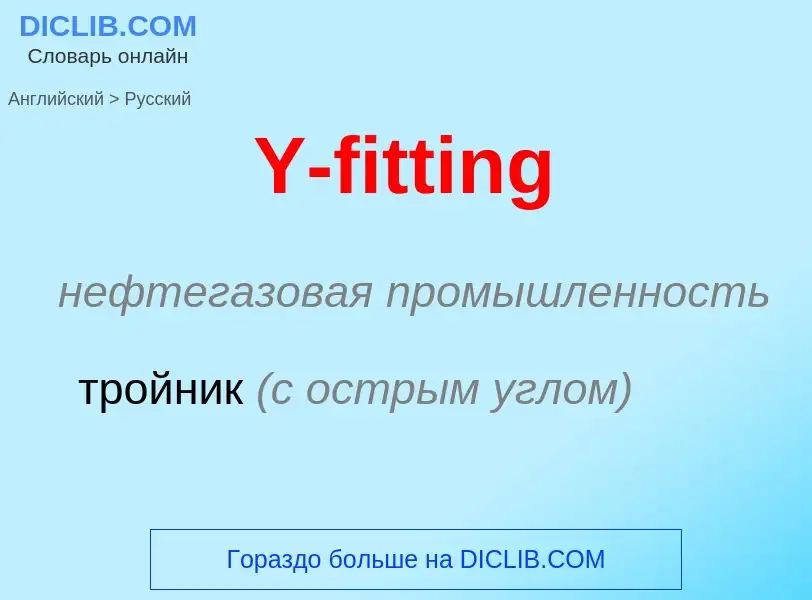Перевод и анализ слов искусственным интеллектом
На этой странице Вы можете получить подробный анализ слова или словосочетания, произведенный с помощью лучшей на сегодняшний день технологии искусственного интеллекта:
- как употребляется слово
- частота употребления
- используется оно чаще в устной или письменной речи
- варианты перевода слова
- примеры употребления (несколько фраз с переводом)
- этимология
Y-fitting - перевод на русский
нефтегазовая промышленность
тройник (с острым углом)
генетика
голандрический
[wai]
существительное
общая лексика
25-я буква английского алфавита
разветвление (дороги, трубы и т. п.)
вилкообразная опора (ватерпаса, нивелира с перекладной трубой)
римская цифра 150 (употреблялась в средние века)
в грам. знач. прил. (также как компонент сложных слов) имеющий форму буквы Y
Y-образный
вилкообразный
ярд (91,44 см)
год
математика
игрек
неизвестная величина
синоним
Определение
1) Название буквы латинского алфавита.
2) а) Неизвестная величина, обозначаемая такой буквой (в математике).
б) Условное обозначение неизвестного или неназываемого лица.
Википедия

Curve fitting is the process of constructing a curve, or mathematical function, that has the best fit to a series of data points, possibly subject to constraints. Curve fitting can involve either interpolation, where an exact fit to the data is required, or smoothing, in which a "smooth" function is constructed that approximately fits the data. A related topic is regression analysis, which focuses more on questions of statistical inference such as how much uncertainty is present in a curve that is fit to data observed with random errors. Fitted curves can be used as an aid for data visualization, to infer values of a function where no data are available, and to summarize the relationships among two or more variables. Extrapolation refers to the use of a fitted curve beyond the range of the observed data, and is subject to a degree of uncertainty since it may reflect the method used to construct the curve as much as it reflects the observed data.
For linear-algebraic analysis of data, "fitting" usually means trying to find the curve that minimizes the vertical (y-axis) displacement of a point from the curve (e.g., ordinary least squares). However, for graphical and image applications, geometric fitting seeks to provide the best visual fit; which usually means trying to minimize the orthogonal distance to the curve (e.g., total least squares), or to otherwise include both axes of displacement of a point from the curve. Geometric fits are not popular because they usually require non-linear and/or iterative calculations, although they have the advantage of a more aesthetic and geometrically accurate result.


![Relation between wheat yield and soil salinity<ref>[https://www.waterlog.info/sigmoid.htm Calculator for sigmoid regression]</ref> Relation between wheat yield and soil salinity<ref>[https://www.waterlog.info/sigmoid.htm Calculator for sigmoid regression]</ref>](https://commons.wikimedia.org/wiki/Special:FilePath/Gohana inverted S-curve.png?width=200)


![waw]] waw]]](https://commons.wikimedia.org/wiki/Special:FilePath/Proto-semiticW-01.png?width=200)

![digraph IJ]] is sometimes written like a Cyrillic У. digraph IJ]] is sometimes written like a Cyrillic У.](https://commons.wikimedia.org/wiki/Special:FilePath/Station Rijssen.jpg?width=200)
